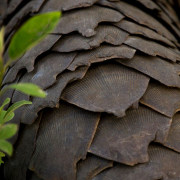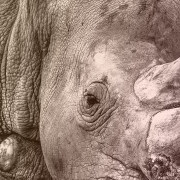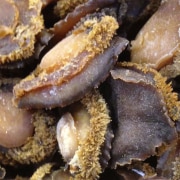|
Getting your Trinity Audio player ready...
|
A new study titled Convergence of wildlife crime with other forms of organised crime, released in May 2021 by the Wildlife Justice Commission (WJC), sheds light on this phenomenon of crime convergence, which has been noticed more and more over the last two decades.
The report shows that criminal networks are dealing in wildlife such as shark fins, tiger parts or timber, alongside other illicit activities such as terrorist financing, fraud and money laundering – though overall, documentation remains limited. This means that wildlife crime can no longer be tackled in isolation. Instead, cross-cutting measures must be developed and agencies of varying specialities must work together.
In our series on corruption in wildlife, forest and fisheries crime, we presented an overview in part 1, and we discussed the link between wildlife crime and corruption in part 2. In this instalment we explore the link between wildlife crime and other crime, and in part 4 we will highlight a recently released case study by WJC on South Africa’s long-standing perlemoen, or abalone, smuggling trade. In the final part 5, we will focus on the money laundering methods and routes used to spirit away the proceeds of these crimes.
In its report WJC also observes that reports are still mostly anecdotal, rather than empirical. One reason for this, according to a report published in January 2021 by the European Union Agency for Criminal Justice Cooperation (Eurojust), could be that when authorities pursue cases involving an environmental crime alongside other crimes such as human trafficking, financing of terrorism, or corruption, the other crimes often become the primary focus of investigations and criminal proceedings. The environmental crime becomes ancillary, Eurojust says, and sometimes is not even investigated and prosecuted to its full potential.
This is good news for crooks, because according to a 2016 joint study by Interpol and the UN Environment Programme (UNEP), titled The Rise of Environmental Crime, environmental crime has been growing at a rate of between 5 % and 7 % per year. This is 2-3 times the growth rate of the global economy, indicative of an extremely lucrative industry, with a relatively low risk of detection and if detected, likely to incur lower criminal penalties. Much of this growth has been enabled by corruption, as we saw in part 2.
An even earlier Interpol report, Environmental Crime and its Convergence with other Serious Crimes, published in October 2015, noted “significant variation” in the number and types of crimes associated with environmental crime, such as corruption, human trafficking, drug trafficking and maritime piracy associated with illegal fisheries, or kidnapping, illegal firearms trading and robbery, extortion and murder, cyber-crime and money laundering in relation to trade in tiger parts and tiger products.
Eurojust mentions organised crime, fraud, document forgery, and money laundering as the other crimes most frequently associated with environmental crime in its own case work.
A TRAFFIC case study digest published in March 2021, meanwhile, names corruption, illicit drugs, fraud, firearms, and money laundering as its most commonly observed other crimes. Case Digest: an initial analysis of the financial flows and payment mechanisms behind wildlife and forest crime uses data from 1 321 incidents of illegal wildlife trade stored in TRAFFIC’s Wildlife Trade Information System from 2004 to 2019.
Sophisticated crooks call for equally sophisticated measures
With the increasing overlap of environmental crime with these other illegal activities, and their widening global spread, it is clear that the various agencies that specialise in each type of crime must work together. Today’s more sophisticated cross-border operating environment requires adaptation, innovation and co-operation to keep up with organised crime groups.
In recent years, said Interpol in its 2015 report, environmental offences had typically been treated in isolation from other types of serious crime. In many countries – and this still applies six years later – agencies dealing with issues relating to the environment tend to operate independently from policing agencies. Environmental crime issues, therefore, are often the sole responsibility of the former, while policing, anti-corruption and national security agencies have typically handled such issues as terrorism, corruption, finance and fraud.
This, the police organisation emphasised, was no longer good enough.
Globalisation and advancements in technology and information sharing have enabled these criminals to transcend conventional categories of crime and exploit other opportunities. Criminals also exploit the established trade routes and modi operandi, used to traffic environmental products, to smuggle other illicit products. Not only that, says WJC, but criminals often benefit from the very same technology, transportation, and infrastructure developments that legitimate industries use to conduct their business across borders.
The 2016 Interpol/UNEP report noted that “as transnational organised criminal groups become more established, their abilities to circumvent enforcement efforts increase, diversify and shift to new products.”
So to date, the criminals have largely remained a step ahead. It’s time for authorities to get savvy. The TRAFFIC case digest notes that “criminals use their knowledge about porous borders, merchandise concealment methods, alternative transportation means, vulnerabilities to corruption, as well as the legal and financial techniques to obscure beneficial ownership, to expand their criminal portfolio.”
Strategies to combat the trend
TRAFFIC urges a better understanding of the linkages between wildlife and forest crime and other related crimes, as this “may benefit the response undertaken by both the private and the public sector, as often the modus operandi employed by the criminals is very similar”.
Speaking at a special event on the topic of wildlife crime, held at the 14th UN Congress on Crime Prevention and Criminal Justice in Kyoto, Japan, on 8 March 2021, WJC executive director Olivia Swaak-Goldman suggested bringing four strategies into play:
- use of intelligence analysis to better understand the convergence of wildlife crime with other forms of organised crime;
- use of specialised investigative techniques which can assist in targeting both corruption and the underlying crime it facilitates;
- establishment of anti-corruption bodies that will have the capacity to deal with corruption linked to wildlife trafficking; and
- a co-ordinated global law enforcement approach to stop these transnational crimes.
“None of these mechanisms are new,” she added. “They are enshrined in the UN anti-corruption convention. The question is: how do we go from having these mechanisms on paper, to implementing them?”
While intelligence analysis is an essential tool, WJC says in its recent report, there is a lack of focus on the collection and analysis of wildlife crime data and information. “Few governments hold their own comprehensive datasets … there is inadequate sharing of the information that does exist, meaning that opportunities to fully understand the threat posed by convergence are being missed and resources are not being allocated appropriately in response to the problem.”
WJC recommends further studies into crime convergence, and its integration into the approach to tackle wildlife crime and organised crime more broadly.
Importantly, WJC notes that “financial and corruption investigations should be conducted in parallel or in response to wildlife crime cases to identify any associated money laundering or corruption offences, payment methods, and to identify the proceeds of crime to facilitate asset recovery”.
Eurojust makes the following recommendations:
- Effective multidisciplinary co-operation;
- Recognition of environmental crime as organised crime and prioritisation of environmental crime cases;
- International co-ordination and co-operation;
- Use of joint investigation teams;
- Financial investigations and recovery of criminal proceeds; and
- Further harmonisation of the EU’s legal framework concerning environmental crime.
The UN Office on Drugs and Crime, in its 2020 World Wildlife Crime report, emphasises the importance of addressing corruption, saying this is “foundational to preventing wildlife crime”. It also says that wildlife crime is serious, organised crime and must be recognised as such in relevant legislation. Taking this step will facilitate inter-agency co-ordination on wildlife crime at the national level, which can be supported by international co-operation on related criminal matters.
The common thread in these, and other sets of recommendations by respected bodies, is that wildlife crime must be viewed in as serious a light as other types of organised crime, and tackled with similar methods and dedication. International co-operation and multi-agency co-ordination are vital, because of the increasingly global nature of these crimes. And deep-diving corruption and financial investigations will help to trace and recover the ill-gotten proceeds.







